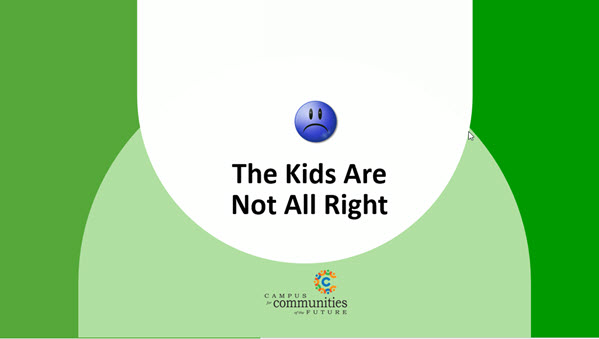The Kids Are Not All Right

Those closer to the frontline would say that while many are doing well, others are not.
While some would attribute the decline in youth mental health to COVID-19, it turns out there were many who weren’t doing well even before then.
Today, we are seeing increasing mental health issues such as depression, anxiety, self-harm, and suicide among young people.
There are differing opinions about why it has happened. However, Jonathan Haidt’s new book, The Anxious Generation: How the Great Rewiring of Childhood is Causing an Epidemic of Mental Illness, sheds new light. It results from his extensive, scientifically-based investigation into the decline in youth mental well-being.
Haidt suggests Gen Z—born after 1995—has become the Anxious Generation. The first cohort of Gen Z hit puberty in 2009 with an often shaky sense of self that he concluded resulted from dramatic technological and social changes.
In part, the anxiety is the result of a shift away from play-based childhoods emphasizing challenging physical and social experiences to ones more likely to be defined by bubble-wrapping children with increased adult supervision, structure, and overprotection. This less risky play has, in turn, failed to prepare children and adolescents to develop essential life skills, overcome childhood fears, and rely less on their parents.
However, that’s only one part of the why. The second set of reasons is more about technological changes. Smartphones, life constantly shaped by a screen, front-facing cameras, an onslaught of apps driving a selfie culture, and social networks that reduce engagement and affirmation to likes and heart emojis.
As Haidt claims in the book, these two trends—over-protection in the real world and under-protection in the virtual world—are the main reasons why children born after 1995 have become the Anxious Generation.
The Anxious Generation is a disturbing account of how children have often been overprotected in the real world while given essentially no protection against a frequently harsh virtual world that contributes to harm. Haidt documents examples of this harm as phone-based sleep deprivation, social deprivation, cognitive fragmentation, and addiction.
However, Haidt also draws on wisdom and modern psychology to further an understanding of healthy development in today’s digitally-driven, fast-paced world; and provides pragmatic, doable actions. He suggests we:
• Increase children’s access to unsupervised outdoor free play and reduce overprotection in the real world;
• Engage children and youth in stable real-world communities, as online networks don’t provide the same sense of belonging and security as those in the real world.
These opportunities are often found in recreation, sports, arts, and cultural settings;
• Delay giving children smartphones until high school, instead giving them phones or watches specialized for communication rather than internet-based apps;
• Postpone the opening of social media accounts until the beginning of high school, as this can help mitigate the negative impacts of social media on adolescent mental
health;
• Encourage collective action among parents and others to implement these changes. It becomes easier if multiple stakeholders are doing the same thing.
Parents, families, teachers, schools, tech companies, governments, and social purpose organizations will need to work together to stop the growing epidemic of mental illness. Haidt has equipped us with valuable documentation and the way forward for doing what is needed.
We can, and we must, do better.
Posted on 04-02-24Next entry: About the Author
Previous entry: Too Tired to Lean in to the Future?

 Brenda Herchmer is the owner of Grassroots Enterprises, a community development consulting company.
Brenda Herchmer is the owner of Grassroots Enterprises, a community development consulting company.